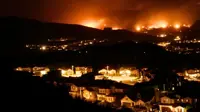Arctic collapse dramatically increases global warming
03 Sep 2012
Parts of Arctic Siberia are releasing 10 more carbon into the atmosphere than previously thought, a University of Manchester scientist and an international team of researchers have found.
Writing in Nature, the scientists, led by Stockholm University, discovered that much more greenhouse gas is being released into the atmosphere than previously calculated, from and ancient an large carbon pool held in a permafrost along the 7,000km desolate coast of northernmost Siberian Arctic – dramatically increasing global warming.
As the temperature climbs carbon, stored in vast ice walls along this Arctic coast called Yedoma, covering about one million km2 (four times the area of the UK), is pouring into the Arctic Ocean in one of the world's most remote and desolate regions.
This region is experiencing twice the global average of climate warming. While satellite images reveal thousands of kilometers of milky-cloudy waters along the Arctic coast, suggesting a massive influx of material, the Yedoma has remained understudied largely due to the region's inaccessibility.
By studying the thaw-eroding slopes of a disappearing island, the team found that the tens-of-thousands year old coastal Yedoma carbon is rapidly converted to CO2 and methane, even before being washed into the sea.
Additional analyses of marine bottom sediments revealed that erosional input from ancient coastal Yedoma was the dominant source of carbon, much larger than inputs from marine sources and river-carried debris from soils.



.webp)
.webp)

.webp)
.webp)

























